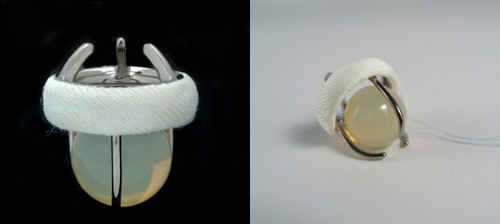Support Page Content
IP 'Made at Sac State' that Benefits California and the World
The Lake at the Bottom of the World
In 2023, The Lake at the Bottom of the World, a documentary film, made by Kathryn Kasic, Associate Professor of Film and Communication Studies, was released on Amazon Prime, Apple iTunes, Google Play, and other major streaming platforms. This thrilling documentary portrays the historic quest of 50 international scientists, ice drillers, and support staff from the Subglacial Antarctic Lakes Scientific Access (SALSA) Project to discover and explore a remote subglacial lake hidden beneath 3,600 feet of ice, 400 miles from the south pole, in western Antarctica from December 2018 to January 2019.

Source: Associate Professor Kathryn E. Kasic
The exciting 2-minute official trailer may entice you into watching the entire 91-minute movie. Kathryn E. Kasic was the director, producer, and cinematographer. Elisabeth de Kleer was also a producer. Billy Collins was an assistant producer, cinematographer, and music composer. Tony Hale was the editor. The National Science Foundation funded the expedition and research.

Source: Associate Professor Kathryn E. Kasic
The Smeloff-Cutter Heart Valve
In 1964, Dr. Edward A. Smeloff, Cardiovascular Surgeon of Sutter Hospital Medical Research Foundation (SHMRF) now Sutter Institute for Medical Research (SIMR); Trevor B. Davey, Professor of Mechanical Engineering of Sacramento State College; and Boris Kaufman, Professor of Mechanical Engineering of Sacramento State invented a titanium mechanical heart valve that would be known as the Smeloff-Cutter Heart Valve. In 1964, Dr. Davey and Dr. Kaufman were with the now-defunct biomedical engineering department at Sacramento State College (now California State University, Sacramento).

Source: National Museum of American History
The three inventors assigned the invention to the Sutter Hospital Medical Research Foundation (SHMRF).
On May 24, 1965, the SHMRF filed a patent application for this invention.
In 1966, the three inventors along with Dr. Arthur C. Huntley of SHMRF and Dr. Frank Gerbode of Presbyterian Medical Center of San Francisco conducted a comparative study of five prosthetic heart valves (Molded leaflet valve of Roe, Leaflet valve of Gott, Kay-Suzuki discoid valve, Starr-Edwards ball valve, and Smeloff-Cutter ball valve).
The three inventors assigned the invention to the Sutter Hospital Medical Research Foundation (SHMRF).
On May 24, 1965, the SHMRF filed a patent application for this invention.
In 1964, Cutter Laboratories, a family-owned pharmaceutical company founded by Edward Ahern Cutter in Berkeley, California, began manufacturing the first design of the Smeloff-Cutter Heart Valve. This heart valve was one of the first commercially available prosthetic heart valves and the first with a double cage design.
In 1966, Cutter Laboratories began manufacturing the second design of the Smeloff-Cutter Heart Valve.
On December 17, 1968, the United States Patent and Trademark Office granted U.S. Patent number US3416159 and published the patent.
On May 24, 1985, the U.S. patent expired.
In 1989, Cutter Laboratories manufactured its last Smeloff-Cutter Heart Valve.
In 1995, Dr. Begonia Gometza and Dr. Carlos M. G. Duran conducted a study with 47 young patients and concluded that "Aortic valve replacement with the Smeloff-Cutter ball valve might be a valid alternative for young patients unable to maintain regular anticoagulation."
One heart valve worked in a patient for 49 years, and another heart valve worked in a patient for 51 years.
There have been 72,000 implants of the Smeloff-Cutter Heart Valve.